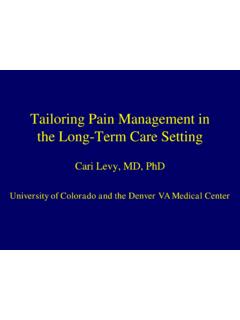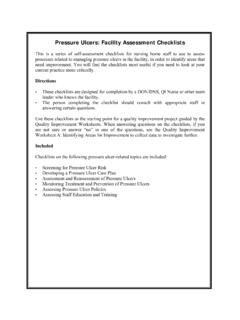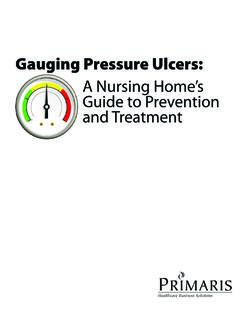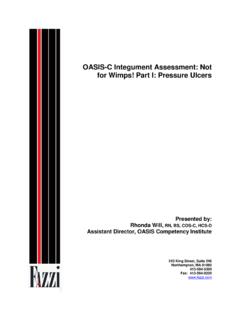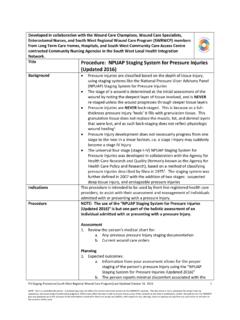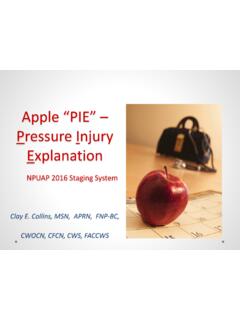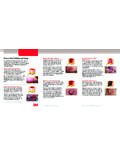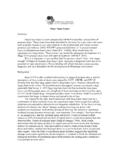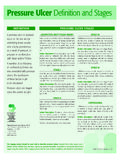Transcription of Resource Guide: Pressure Ulcer Prevention and …
1 1 U pda ted N ov ember 2011 Resource guide : Pressure Ulcer Prevention and treatment 2 TABLE OF CONTENTS TABLE OF CONTENTS .. 2 PURPOSE .. 3 INTRODUCTION .. 4 DEFINITIONS .. 6 Pressure Ulcer Prevention 8 IDENTIFICATION AND TRACKING OF Pressure ULCERS .. 10 ASSESSMENT AND DOCUMENTATION OF Pressure ULCERS .. 11 Pressure Ulcer treatment STRATEGIES .. 13 INDIVIDUALIZED 14 ADDITIONAL RESOURCES .. 15 3 PURPOSE This guide is intended to assist Quality Improvement Organizations and nursing homes in reducing the rate of high risk Pressure ulcers by providing helpful resources.
2 This guide is not meant to be an exhaustive list of resources. With the discontinuation of MedQIC, there is not currently a central location for QIO materials to be posted on the internet. The NCC searched for existing resources from the QIO community. Some of those resources are listed here. 4 INTRODUCTION A Pressure Ulcer is localized injury to the skin and/or underlying tissue usually over a bony prominence, as a result of Pressure , or Pressure in combination with shear and/or friction ( npuap ). In addition to being costly (CMS estimates the cost of treating just one Stage III or IV Pressure Ulcer is $43,1801 Decrease in bowel and bladder function ), Pressure ulcers are serious medical conditions and one of the important measures of the quality of clinical care in nursing homes.
3 Pressure ulcers can be dangerous and painful for a resident, in part because broken skin can allow infection into the body. If untreated, Pressure ulcers can deepen and even expose the bone. Deeper ulcers may be hard to heal or may not heal at all. Sometimes, Pressure ulcers can lead to death. The presence of Pressure ulcers limits the quality of life for a resident as evidenced by: More incontinence Decrease in ability to move without help Decrease in mental capacity Increase in pain Increased risk for infection Less participation in activities (Fact Sheet) Data from the 2004 National Nursing Home Survey revealed that 2% to 28% of nursing home residents have Pressure ulcers.
4 Other key findings from the 2004 National Nursing Home Survey2 About 59,000 current nursing home residents (11%) had Pressure ulcers. Stage 2 Pressure ulcers were the most common. : Residents aged 64 years and under were more likely than older residents to have Pressure ulcers. Residents of nursing homes for a year or less were more likely to have Pressure ulcers than those with longer stays. 1 Federal Register: Department of Health and Human Services Centers for Medicare and Medicaid Services Part II, p. 48473 Tuesday, August 19, 2008.
5 2 5 One in five nursing home residents with a recent weight loss had Pressure ulcers. Thirty-five percent of nursing home residents with stage 2 or higher (more severe) Pressure ulcers received special wound care services. Clinical practice, expert opinions, and published literature indicate that most, but not all, Pressure ulcers can be prevented. In 2010, the National Pressure Ulcer Advisory Panel ( npuap ) organized a consensus congress to study the issue of avoidable and unavoidable Pressure ulcers. The results confirmed that Pressure ulcers are unavoidable in certain situations where Pressure cannot be relieved and perfusion cannot be improved3 This guide provides resources to help nursing homes prevent avoidable Pressure ulcers, identify and document Pressure ulcers, and use evidence-based guidelines to care for and/or heal Pressure ulcers.
6 For regulatory guidance on F309, Quality of Care, and F 314, Pressure Sores, refer to The CMS Manual System Guidance to Surveyors for Long Term Care Facilities, Appendix PP. 3 6 DEFINITIONS Pressure Ulcer - A Pressure Ulcer is localized injury to the skin and/or underlying tissue usually over a bony prominence, as a result of Pressure , or Pressure in combination with shear and/or friction Suspected deep tissue injury - Purple or maroon area of discolored intact skin due to damage of underlying soft tissue damage. The area may be preceded by tissue that is painful, firm, mushy, boggy, warmer or cooler as compared to adjacent tissue .
7 Stage 1 Pressure Ulcer - An observable, Pressure -related alteration of intact skin, whose indicators as compared to an adjacent or opposite area on the body may include changes in one or more of the following perimeters: skin temperature (warmth or coolness); tissue consistency (firm or boggy); sensation (pain, itching) and/or a defined area of persistent redness in lightly pigmented skin, where as is darker skin tones, the Ulcer may appear with persistent red, blue, or purple hues. Stage 2 Pressure Ulcer - Partial thickness loss of dermis presenting as a shallow open Ulcer with a red pink wound bed, without slough.
8 May also present as an intact or open/ruptured serum-filled blister. Stage 3 Pressure Ulcer -Full thickness tissue loss. Subcutaneous fat may be visible but bone, tendon or muscle is not exposed. Slough may be present but does not obscure the depth of tissue loss. May include undermining and tunneling. Stage 4 Pressure Ulcer -Full thickness tissue loss with exposed bone, tendon or muscle. Slough or eschar may be present on some parts of the wound bed. Often include undermining and tunneling. Unstageable Pressure Ulcer - Full thickness tissue loss in which the base of the Ulcer is covered by slough (yellow, tan, gray, green or brown) and/or eschar (tan, brown or black) in the wound bed.
9 Until enough slough and/or eschar is removed to expose the base of the wound, the true depth, and therefore stage, cannot be determined. Stable (dry, adherent, intact without erythema or fluctuance) eschar on the heels serves as the body s natural (biological) cover and should not be removed. ( npuap 2007) Healed Pressure Ulcer - Completely closed, fully epithelialized, covered completely with epithelial tissue , or resurfaced with new skin, even if the area continues to have some surface discoloration. Eschar-dead or devitalized tissue that is hard or soft in texture; usually black, brown, or tan in color, and may appear scab-like.
10 Necrotic tissue and eschar are usually firmly adherent to the base of the wound and often the sides/edges of the wound. Exudate-any fluid that has been force out of the tissues or its capillaries because of inflammation or injury . 7 Non-Blancheable-Reddened areas of tissue that do not turn white or pale when pressed firmly with a finger of device. Shear- is the result of gravity pushing down on a patient's body and the resistance between the patient and the chair or bed. Friction- the force of rubbing two surfaces against one Dermis-the connective tissue underlying the skin's surface (epidermis) Epidermis-outer layer of the skin Slough tissue -Non-viable yellow, tan, grey, green, or brown or tissue ; usually moist, can be soft, stringy and mucinous in texture.
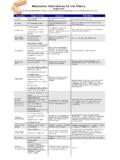
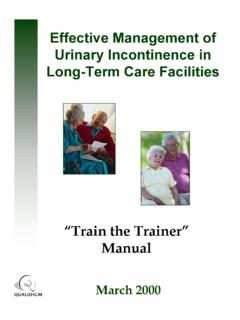
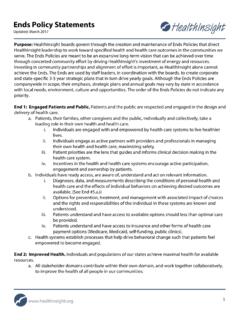
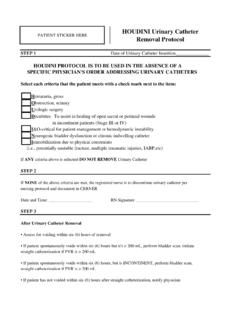

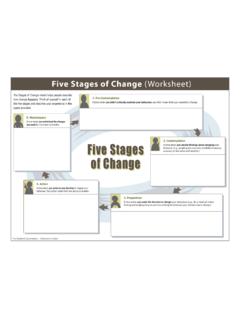
![2014 QAPI Plan for [Facility Name]](/cache/preview/6/6/9/d/c/1/a/b/thumb-669dc1ab5a6c622d3e508ca0e8604845.jpg)
